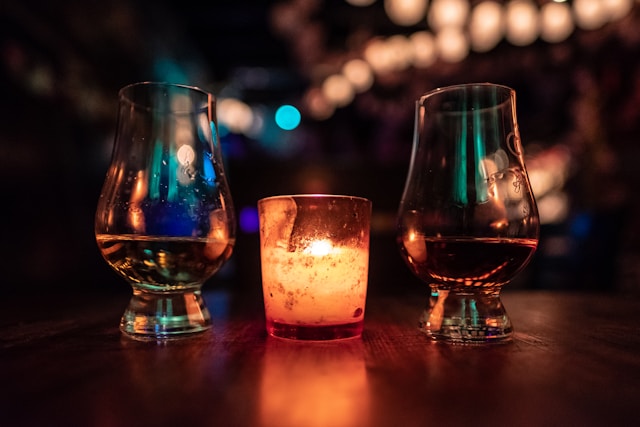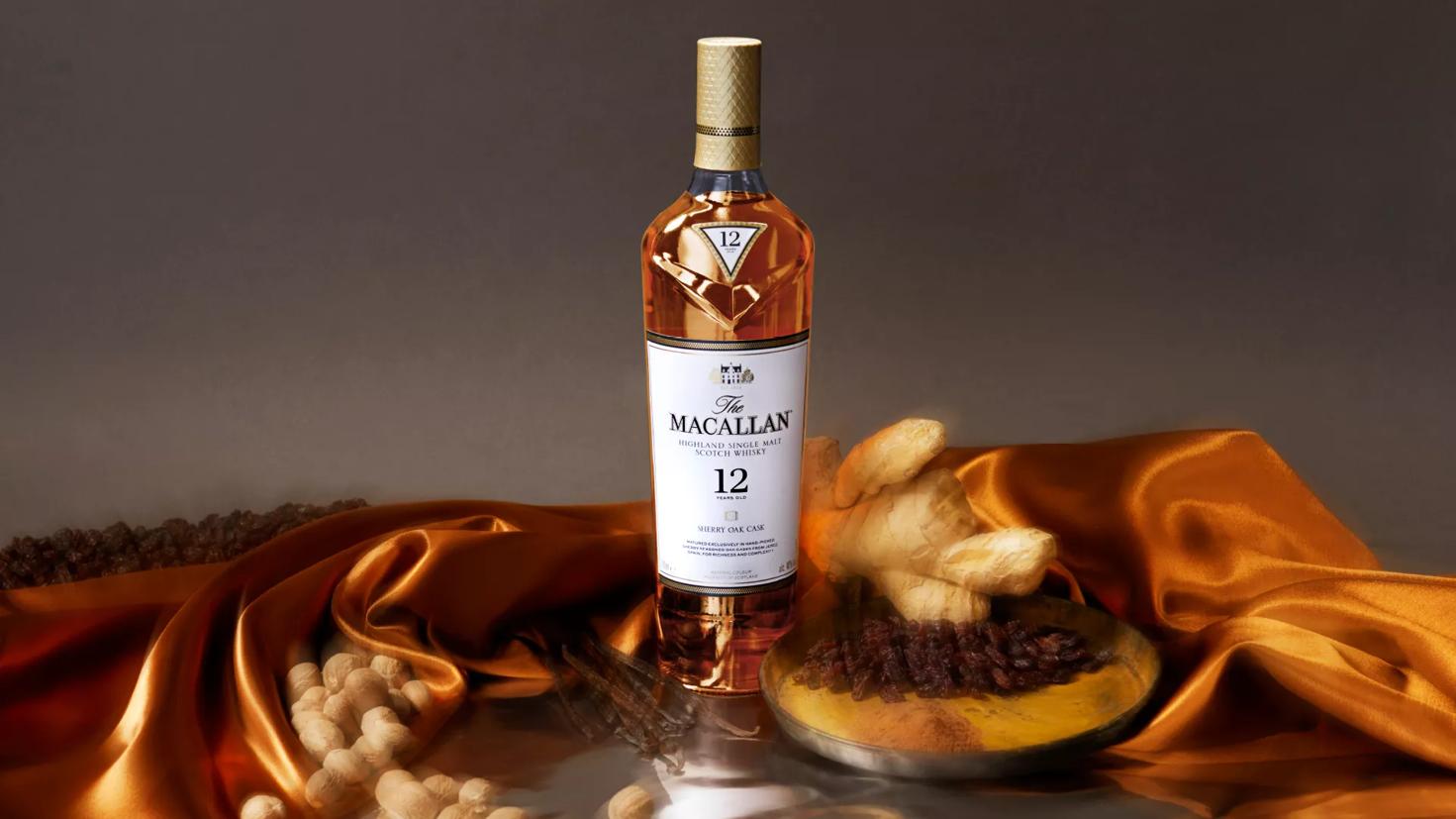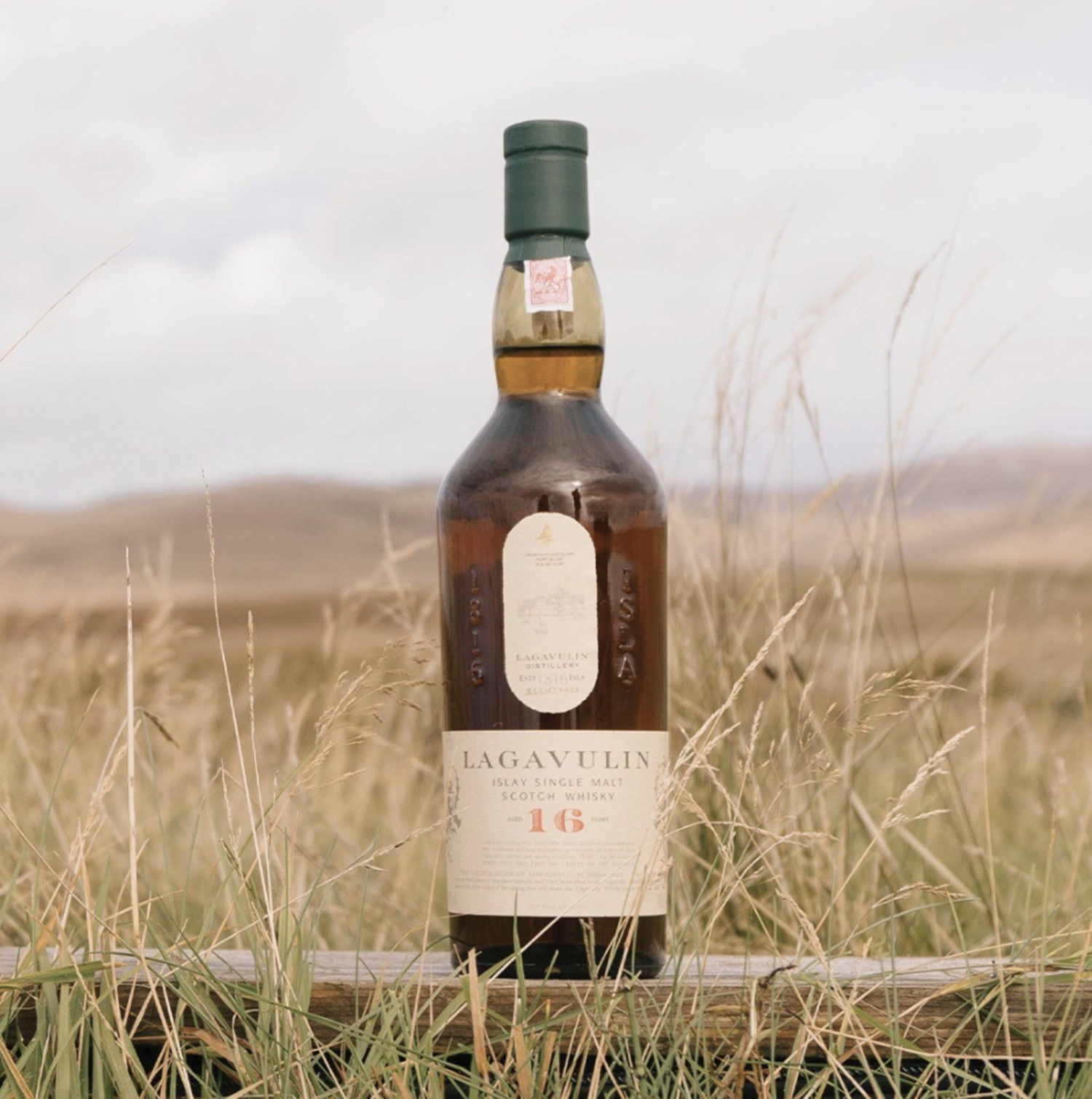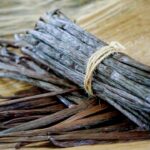
If you’re a fan of Scotch whisky, then you’ve probably heard of Macallan and Lagavulin. These two brands are often compared to each other, and for good reason. Both are known for producing high-quality whiskies that are enjoyed by connoisseurs all over the world.
Table of Contents
History of Macallan and Lagavulin
 photo credit: brand-assets.edrington.com
photo credit: brand-assets.edrington.com
Macallan’s History
Macallan is one of the most famous Scotch whisky brands in the world, known for its rich, smooth flavor and exceptional quality. The distillery was founded in 1824 by Alexander Reid, a barley farmer and schoolteacher. Over the years, Macallan has become known for its commitment to using only the finest ingredients and traditional distilling methods.
One of the key factors that sets Macallan apart from other whisky brands is its use of sherry casks for maturation. Macallan is one of the few distilleries that still uses sherry casks, which are known for imparting a rich, fruity flavor to the whisky.
 photo credit: cdn.shoplightspeed.com
photo credit: cdn.shoplightspeed.com
Lagavulin’s History
Lagavulin is a legendary whisky brand that is known for its intense, peaty flavor and distinctive smokiness. The distillery was founded in 1816 on the Isle of Islay, and has been producing exceptional whisky ever since.
Lagavulin is known for its commitment to using traditional distilling methods, including the use of peat fires to dry the barley. This gives the whisky its distinctive smoky flavor, which is beloved by whisky enthusiasts around the world.
Production Process
Macallan’s Production Process
Macallan’s production process is known for its attention to detail and quality. The distillery uses only the finest ingredients, including locally sourced barley, and draws its water from a nearby spring. The barley is malted on-site and then mashed with hot water to extract the sugars. The resulting liquid, called wort, is then fermented with yeast in large wooden washbacks. The fermentation process takes around 48–72 hours and produces a beer-like liquid with an alcohol content of around 8–9%.
The next step in the process is distillation. Macallan uses small copper stills, which are said to give the whisky a more intense flavor. The spirit is distilled twice: first in the wash still, then in the spirit still. The spirit is then aged in oak casks, which have been previously used to age sherry. The casks are stored in the distillery’s warehouses, where the whisky is left to mature for a minimum of 12 years.
Lagavulin’s Production Process
Lagavulin’s production process is known for its smoky, peaty flavor. The distillery uses malted barley, which is sourced from the Port Ellen maltings on the island of Islay. The barley is then mashed with hot water to extract the sugars. The resulting liquid, called wort, is then fermented with yeast in large wooden washbacks. The fermentation process takes around 55–75 hours and produces a beer-like liquid with an alcohol content of around 6–8%.
The next step in the process is distillation. Lagavulin uses two large copper stills, which are said to give the whisky a more robust flavor. The spirit is distilled twice: first in the wash still, then in the spirit still. The spirit is then aged in oak casks, which have been previously used to age bourbon. The casks are stored in the distillery’s warehouses, where the whisky is left to mature for a minimum of 16 years.
Taste Comparison
When it comes to taste, Macallan and Lagavulin have distinct differences that set them apart from each other. Macallan is known for its smooth and sweet taste, while Lagavulin is famous for its smoky and peaty flavor. Here is a closer look at the taste comparison between the two:
Macallan
Macallan has a rich and elegant taste that is complemented by its fruity and floral notes. The sweetness of the whisky comes from the sherry casks used during the maturation process. The 12-year-old Macallan has a light amber color with a smooth and creamy texture. It has a medium body and a long finish that leaves a pleasant aftertaste in your mouth. Macallan is perfect for those who prefer a sweeter taste in their whisky.
Lagavulin
Lagavulin, on the other hand, has a smoky and peaty taste that is not for the faint of heart. It has a deep amber color, a heavy body, and a complex flavor profile. The smokiness of the whisky comes from the peat used during the malting process. The 16-year-old Lagavulin has a strong and intense flavor with a long and dry finish. It is perfect for those who appreciate a well-balanced, smoky whisky.
Comparison
When comparing the tastes of Macallan and Lagavulin, it ultimately comes down to personal preference. If you prefer a sweeter and smoother taste, then Macallan is the way to go. If you like a smoky and peaty flavor, then Lagavulin is the better choice. Both whiskies are high-quality and offer a unique taste experience that is worth trying.
Price Comparison
When it comes to comparing Macallan and Lagavulin, price is an important factor to consider. Macallan is usually more expensive than Lagavulin because it undergoes a longer maturation process.
For instance, the Macallan 12 typically costs around $60, while the Lagavulin 16 costs around $100. However, keep in mind that prices can vary depending on your location and where you purchase the bottles.
If you are on a budget,the Macallan may be a better choice for you. It is still a high-quality Scotch whisky, but it is generally more affordable than Lagavulin. On the other hand, if you are willing to spend more money on a premium whisky, Macallan may be the way to go. It is known for its smooth and complex flavor profile, which is a result of its longer maturation process.
Conclusion
In the end, choosing between Macallan and Lagavulin comes down to personal preference. Both are excellent whiskies with unique flavors and characteristics.
If you prefer a sweeter, smoother taste with hints of vanilla, caramel, and fruit, then Macallan is the way to go. Its sherry cask aging process gives it a rich, elegant flavor that is hard to resist.
On the other hand, if you are a fan of smoky, peaty flavors with a hint of spice, then Lagavulin is the clear winner. Its bold, intense taste is a result of the extensive peat used in the malting process.
Related Posts
If you’re a whisky enthusiast and enjoyed learning about the differences between Macallan and Lagavulin, you might also be interested in exploring other whisky comparisons. Here are a few related posts that you might find interesting:
- Battle of the Bourbons- E.H. Taylor, Jr. Small Batch vs Single Barrel: If you’re a bourbon lover, you might enjoy comparing E.H. Taylor, Jr. Small Batch and E.H. Taylor, Jr. Single Barrel. The Whisky Lady provides a detailed comparison of the two bourbons, discussing their flavor profiles and overall quality.
- Glenfiddich 12 vs Glenlivet 12: Which Single Malt Scotch Whiskey is Better?: Glenfiddich and Glenlivet are two of the most popular single malt scotch whiskies in the world. If you’re curious about the differences between the two, The Whisky Lady has you covered with a comprehensive comparison of Glenfiddich 12 and Glenlivet 12.
- Russell’s Reserve 10 Year vs Single Barrel: Which One Wins?: Wild Turkey’s Russell’s Reserve 10 Year and Single Barrel are two bourbons that are often compared. The Whisky Lady provides a detailed analysis of the two bourbons, discussing their flavor profiles and overall quality.
- Ardbeg 10 vs Laphroaig 10: Which Is the Better Whiskey?: If you’re a fan of peated scotch whisky, you might be interested in comparing Ardbeg 10 and Laphroaig 10. The Whisky Lady provides a detailed comparison of the two whiskies, discussing their flavor profiles and overall quality.
- Maker’s Mark vs Bulleit Bourbon: Which One Should You Choose?: Maker’s Mark and Bulleit are two well-known Kentucky Straight Bourbon Whiskeys. If you’re trying to decide between the two, The Whisky Lady provides a detailed comparison of their flavor profiles and overall quality.



